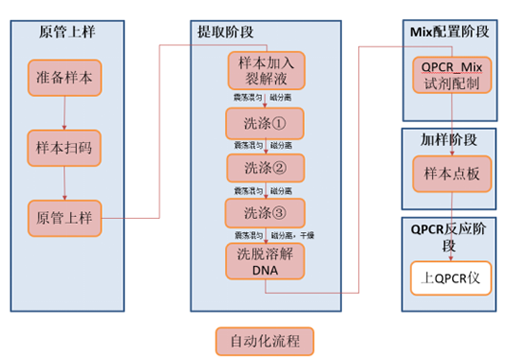Infectious disease is a serious threat to human health in the world. Rapid and accurate diagnosis is an important prerequisite for effective treatment, disease monitoring and disease control. With the continuous development and improvement of molecular detection technology, molecular detection has been widely used in the diagnosis and treatment monitoring of pathogenic microorganism infection, and has become an indispensable tool in the diagnosis and efficacy evaluation of some important infectious diseases. With the development of basic research and technology, the recognition degree and detection market of pathogenic microorganisms are also growing. In order to meet the future development needs, amtk has launched a series of automation workstation integration programs, which are mainly distributed in fluorescence-qpcr detection and ngs detection. The whole process is convenient, fast, accurate, low pollution rate and high automation degree Good service in blood stations, hospitals, centers for disease control, third-party medical laboratories and other institutions.
Real-time fluorescent quantitative PCR is a mature rapid nucleic acid detection technology, which has been widely used in the rapid detection of infectious diseases pathogens, providing laboratory diagnostic basis for the diagnosis of infectious diseases.
Real time fluorescent quantitative PCR has been applied to the qualitative detection of viruses, the typing detection of virus genotypes and gene subtypes, and the identification detection of similar viruses. It is used to provide clinical diagnosis evidence of infectious diseases, understand the epidemic situation of viruses, monitor the epidemic types of viruses, and find the source of virus infection, It is of great significance for the formulation of prevention and control strategies and measures for targeted viral infectious diseases.
Real-time fluorescence quantitative PCR can detect the viral load of infected patients, animal tissues and body fluids, detect the virus resistant mutants and the infection markers in patients. It has important clinical significance for monitoring the virus resistance in patients, tracking the treatment process, and evaluating the vaccine prevention effect or drug treatment effect.

⬛ High throughput HPV / HBV / EB --- qPCR detection automation host configuration

⬛ Original tube sample HPV / HBV / EB -- qPCR detection automation host configuration

EB virus qPCR test data. 16 samples were extracted many times, and the data of manual and workstation were compared. The data of manual and workstation parallel experiments were 1 time and 3 times respectively

The data shows that there is no significant difference between the automatic and manual extraction of EB virus, and the sample concentration meets the test requirements